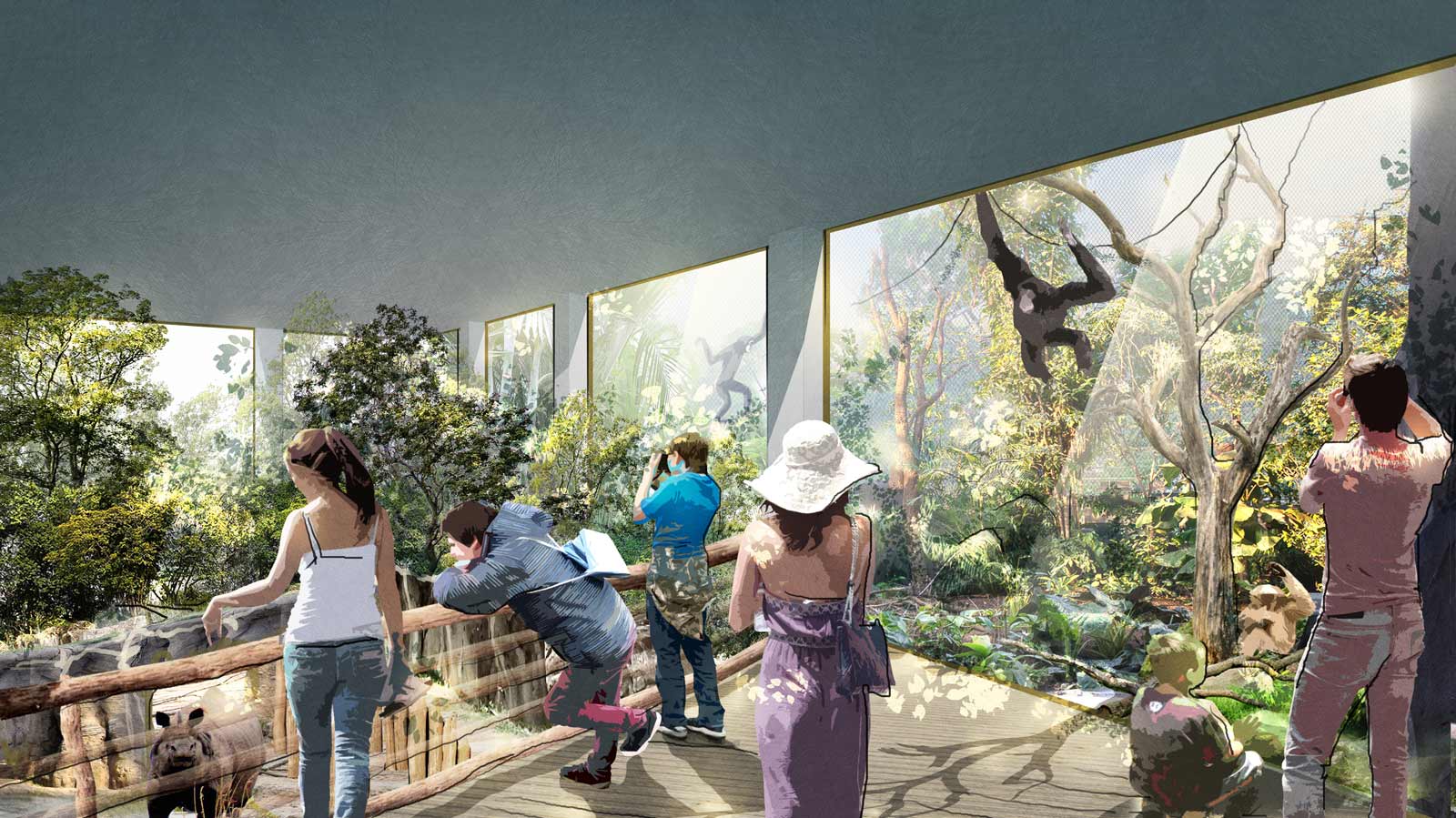Zoos are places that are observed, perceived by people and contain educational messages. The zoo should be designed as environments where visitors can learn about the habitats of animals and discover the interesting animal behavior in natural exhibition areas. In modern zoos, it is important to provide the necessary conditions for each animal species to survive. For this, experts who will examine the natural habitats of the animals to be exhibited and reveal their life aspirations are required. The arrangement of the exhibition areas in accordance with the natural environment allows the visitor to show the real behavior of the animal. Thus, the negative effects of the captivity of the animals are minimized and this inevitable situation is turned into a way that makes the animals more attractive.
The design group that will prepare the master plan, which is the first stage of zoo design, is composed of landscape architects, architects, engineers, zoologists and ecology consultants. While the master plan is prepared by calculating the future growth rate of the zoo, it includes the economy and management plan, as well as the physical planning (structuring, circulation, outdoor exhibition areas, vegetation).
The design and functional organization of the zoo, which has a good design setup, should be discussed in three different sections, which should be different from each other but in harmony. These are: Areas reserved for visitors, areas where animals are exhibited and boundary elements. The exhibition areas consist of large objects suitable for animal habitats and topography. The different angles of the exhibition space, the coverings formed in the form of the land add a sense of depth to the space and allow the visitor to explore animal behavior. Plants in the exhibition areas of animals; Its texture describes the habitat of the animal displayed with its form and shows continuity. It also adds a depth effect to the space. The most important feature in determining the quality of zoos should be that animals have places where they can exhibit their natural behavior. Because zoos are places where people get in touch with nature, learn about animals and learn to respect their right to life. However, when designers perceive these spaces as areas where only animals are displayed and easily accessible by visitors, zoos turn into artificial environments that are far from natural. However, when exhibition areas present their natural habitats to animals, they positively affect the experience of the visitors and the lives of the animals living in these exhibitions. Thus, visitors have the opportunity to discover the mystery in nature by obtaining accurate information about the physical characteristics and habitat of each animal.


